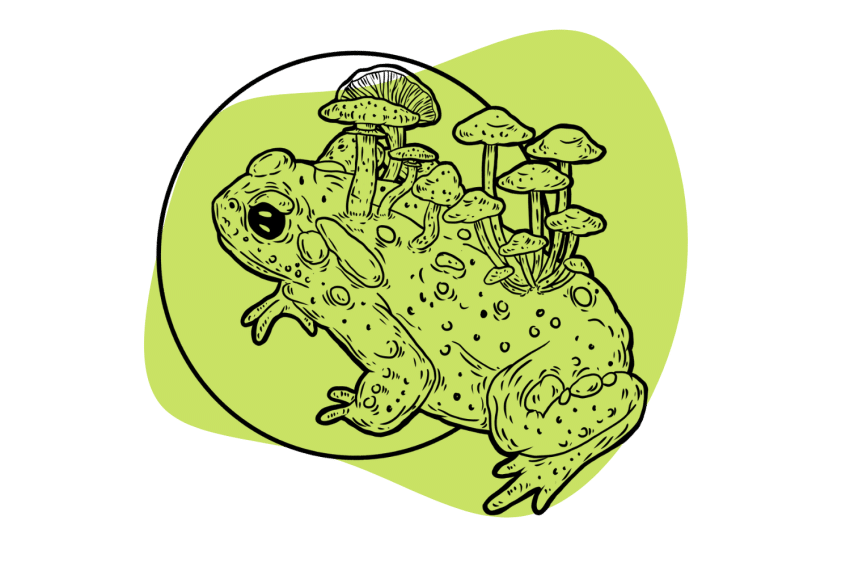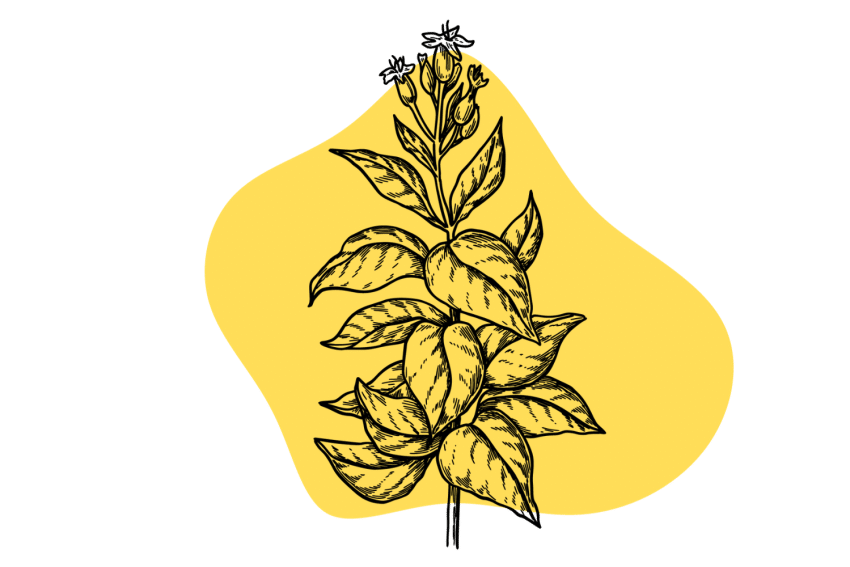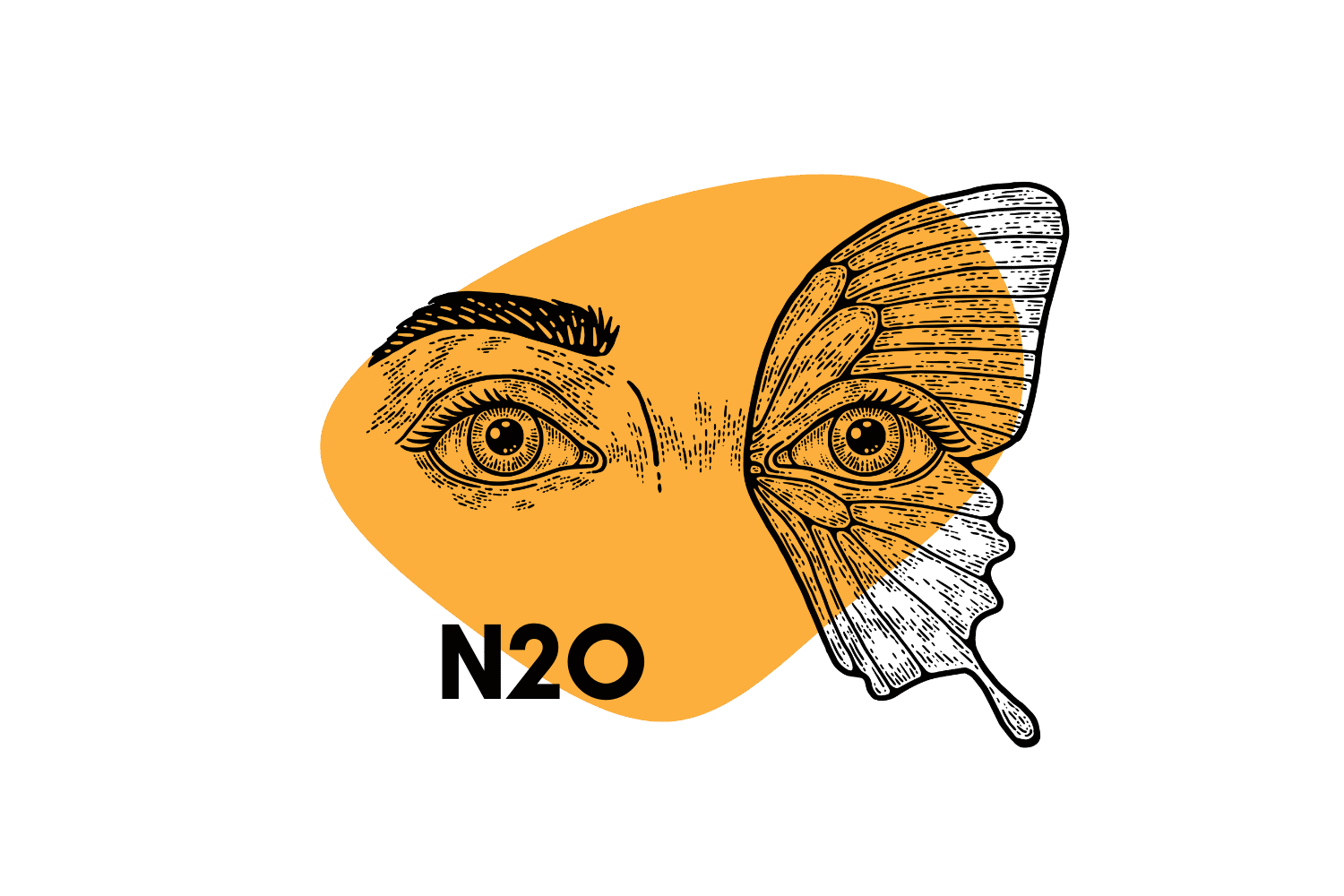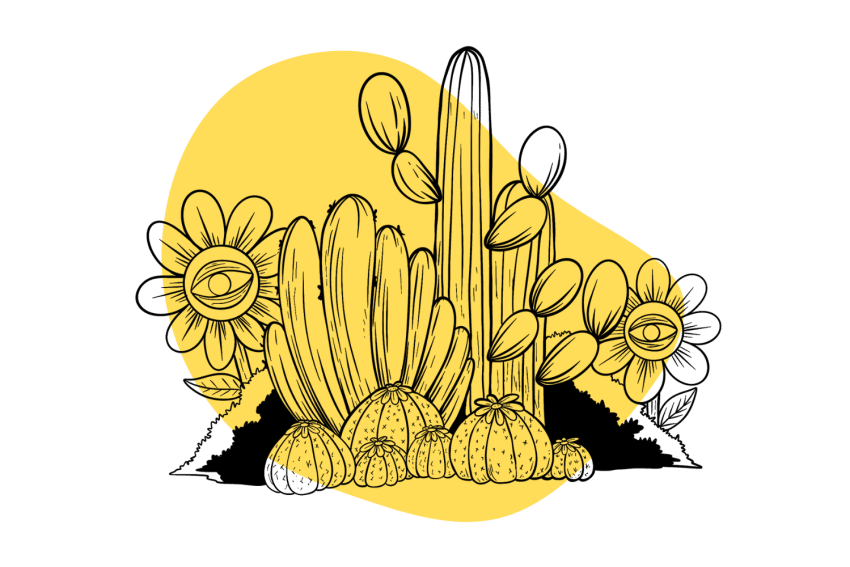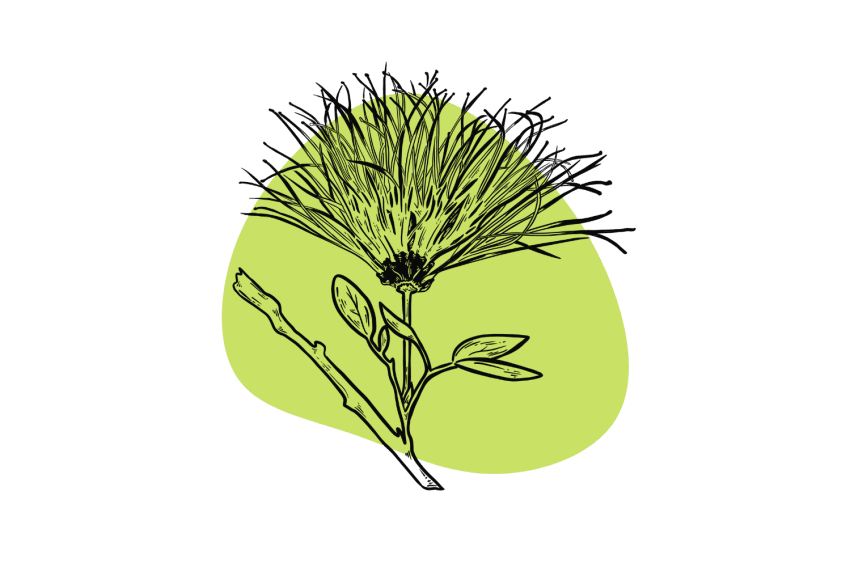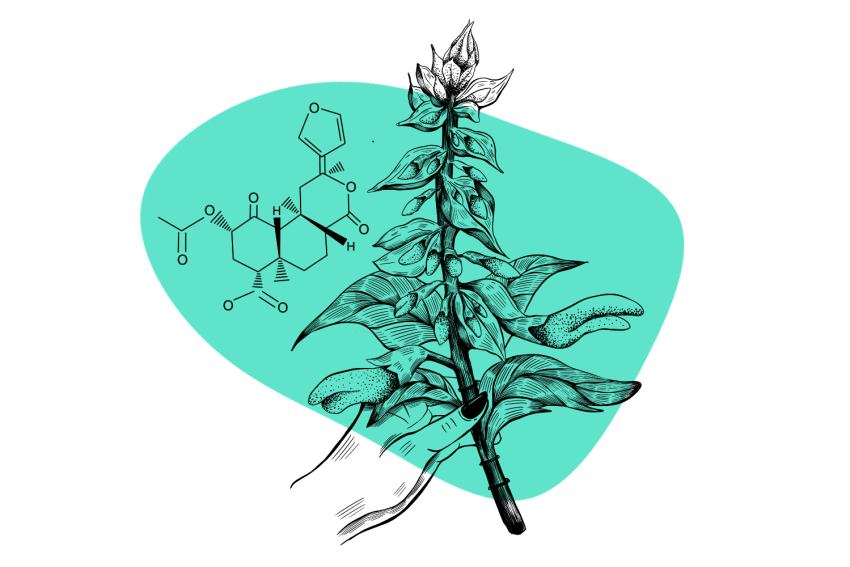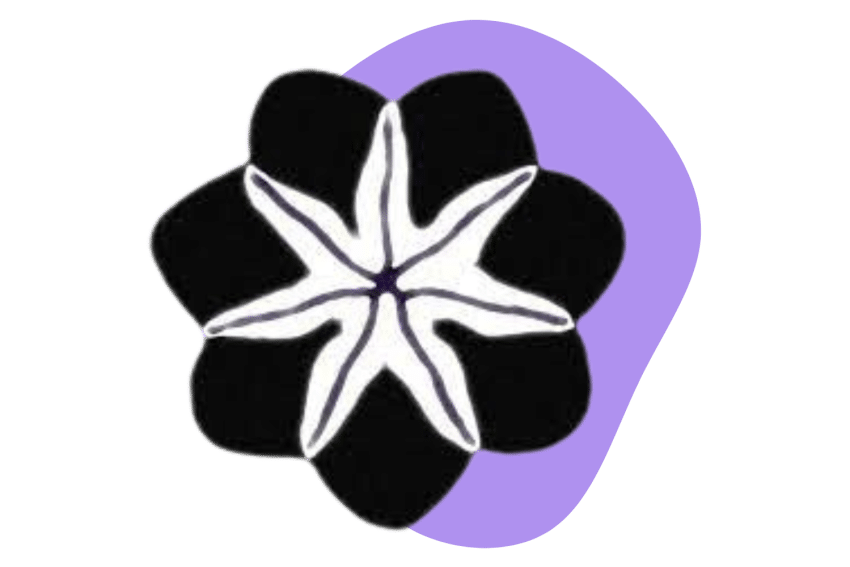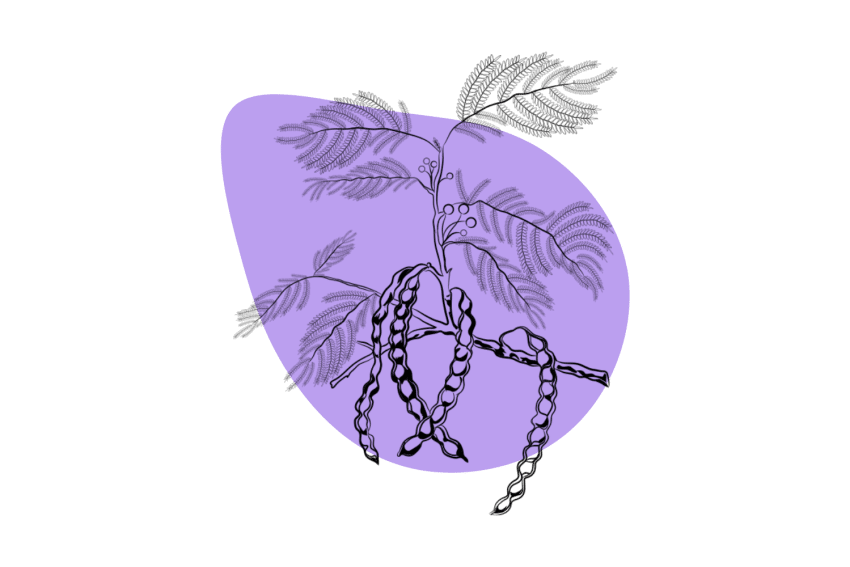Blue Lotus Flower: The Ancient Egyptian Dream Herb
Blue lotus is most commonly used for inducing lucid dream states.
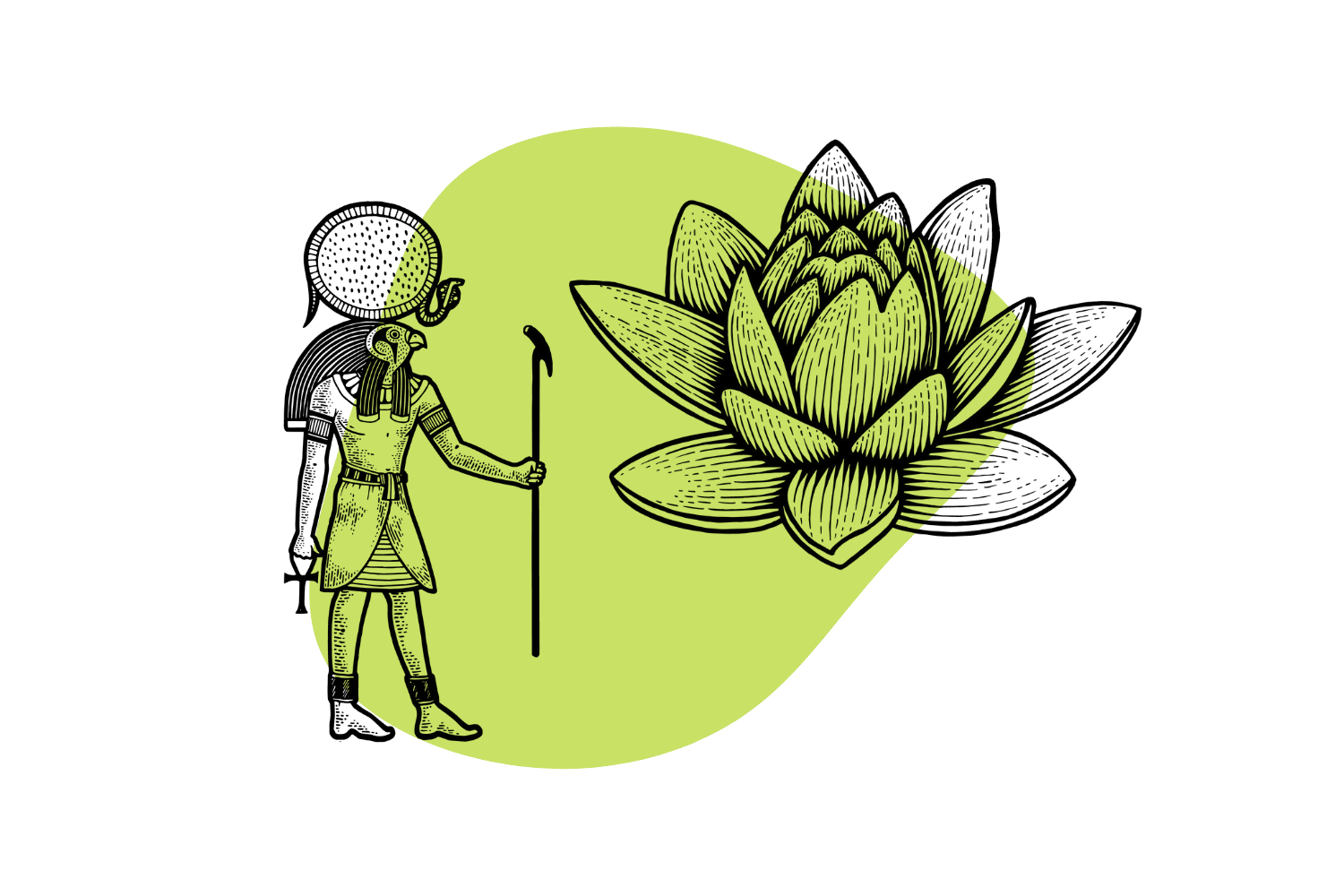
Blue lotus was a sacred plant used by the ancient Egyptians and Syrians.
These early civilizations revered the plant for its psychoactive properties, intoxicating aroma, and significant metaphorical representation with the sun and creation.
Some stories in ancient Egypt go as far as to suggest that life as we know it blossomed from a blue lotus flower at the dawn of time.
Today, ceremonial use of blue lotus has diminished substantially, but there’s a growing interest of psychonauts interested in the plant’s unique ability to induce lucid dream states.
What is Blue Lotus Flower?
Blue lotus (Nymphaea caerulea) is an aquatic plant found in freshwater ponds and lakes around Eastern Africa.
The flower of the blue lotus was closely associated with the sun. In the morning, when the sun rises, the petals open. At night, when the sun goes down, the petals close again. Because of this, the ancient Egyptians believed it to be intimately connected with the sun god Ra.
Blue lotus is also able to thrive in the muddy, oxygen-deprived soil at the bottom of lakes and ponds where no other plants can grow. It was believed that the world was created from a blossoming blue lotus flower that sprouted from the otherwise sterile primal waters.
On top of the metaphorical references, blue lotus flower has psychoactive properties that highlight its spiritual significance. It contains two key alkaloids with psychotropic effects — aporphine and nuciferine. Both of these compounds have opioid-like activity and induce a trance-like state of consciousness.
Note: Blue lotus flower (Nymphaea caerulea) shouldn’t be confused with the sacred lotus flower (Nelumbo nucifera). While both plants contain the compound nuciferine, these plants are not considered interchangeable and do not have same effects.
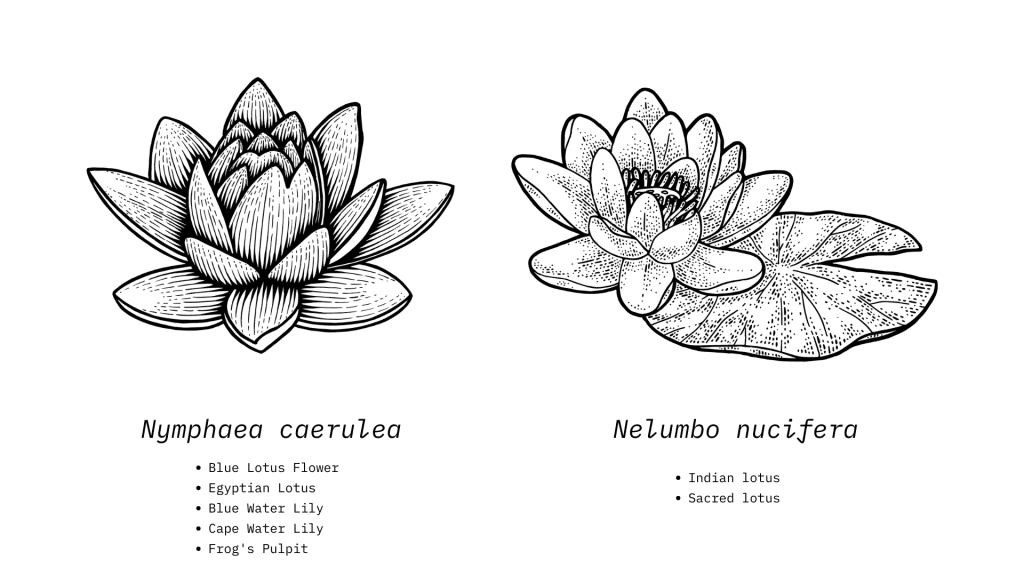
Blue Lotus: Specs & Technical Details
| Active Ingredients | Aporphine (Apomorphine) & Nuciferine |
| Level of Risk | Low |
| Common Names | Blue Lotus Flower, Egyptian Lotus, Blue Water Lily, Cape Water Lily, Frog’s Pulpit |
| Most Common Side-Effects | Sedation, catalepsy, respiratory depression |
| Duration of Effects | 4–6 hours |
| Legality | Legal in most parts of the world. Illegal in Russia & Poland |
History & Folklore of the Blue Lotus Flower
Blue lotus flower has a rich history in East Africa and the Middle East. It grows abundantly in the Nile river and local streams, ponds, and lakes throughout Egypt. Most of the folklore and mythology involving this species comes from ancient Egyptian civilizations living around the Nile river.
Because of its psychoactive properties, this plant was often associated with the gods and the afterlife. It’s frequently depicted in art, sculptures, and hieroglyphs on the walls of tombs.
The petals of the blue lotus flower were sometimes used to cover the mummies of Egyptian pharaohs.
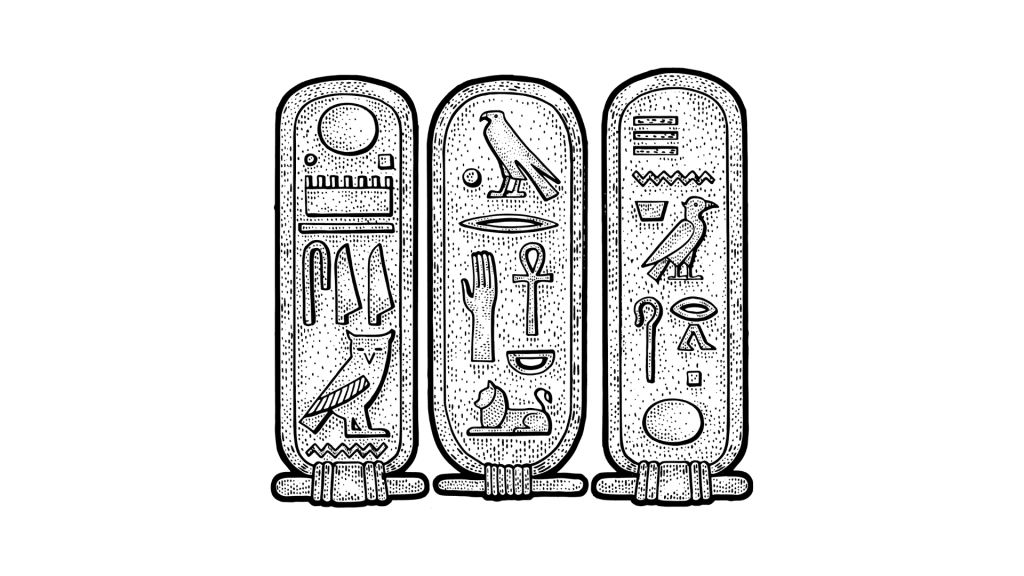
Nefertem: The Egyptian God of Perfume
In ancient Egyptian mythology, Nefertem is the god of perfume and aromatherapy. He wears a blue lotus flower on his head.
Nefertem was born at the beginning of creation from a blue lotus as it blossomed out of the waters of chaos (called “Nun”).
Upon his creation, Nefertem began to cry from loneliness. His tears formed humanity.
Every day, Nefertem goes through a cycle of death and rebirth. In the mornings when the sun rises, he is born — in the evenings, when the sun sets, he dies and travels to the underworld.
This is mimicked by the blud lotus flower as its petals open each morning and close again at night.
Ra: The Egyptian God of the Sun
Ra, the god of the sun and one of the central gods in ancient Egyptian mythology, is also associated with the blue lotus flower.
Ra is responsible for dragging the sun through the sky each day in a small rowboat. With such an important role, Ra receives a lot of credit for the creation and maintenance of all life on Earth.
Blue lotus is metaphorically connected with the sun god Ra due to its tendency to open and close in tandem with the sun as it moves around the globe.
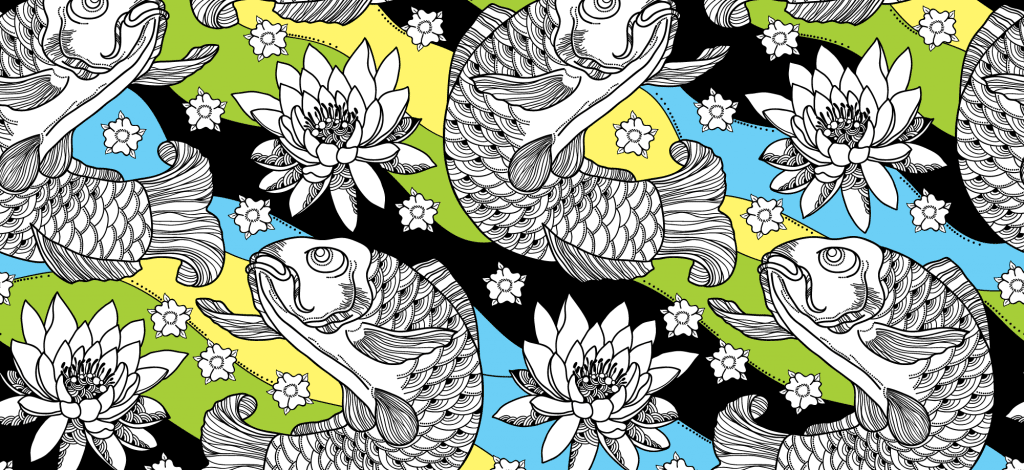
What Are The Effects of Blue Lotus Flower?
Blue lotus flower is considered soporific (sleep-inducing), euphoric (mood-enhancing), and oneirogenic (dream-inducing).
Blue lotus tea is primarily used to help users fall asleep and to induce lucid-dream states. It also acts as an aphrodisiac and euphoric and can be used medicinally as an emetic and analgesic (pain-killer).
This herb is undeniably psychoactive but in an entirely different way than conventional psychedelics such as magic mushrooms (psilocybin), LSD, or DMT.
It’s even different from atypical psychedelics like salvia (Salvia divinorum), ketamine, or PCP.
The blue lotus flower is more similar in terms of its psychoactive effects to the fly agaric mushroom or LSA (lysergic acid amide) from morning glory and Hawaiian Baby Woodrose.
Instead of producing visions or distortions in sensory perception, this herb causes users to fall into a trance-like state. You’re in a dream, yet you remain (mostly) self-aware. These conditions set users up perfectly to enter what’s called a lucid dream.
1. Soporific Effects (Sedation)
After drinking blue lotus flower tea, users feel euphoric and relaxed — much like the effects of other herbs such as kava (Piper methysticum) or kratom (Mitragyna speciosa).
The more tea one drinks, the stronger the sedative action of the flower. It doesn’t take much of this stuff before users begin feeling the insurmountable urge to close their eyes and drift off to sleep.
People who drink blue lotus tea often report experiencing a deeper and longer-lasting sleep.
2. Oneirogenic Effects (Lucid Dreaming)
Some people use blue lotus flower to induce lucid dreams.
A lucid dream is a type of dream where the user knows they’re dreaming.
By simply recognizing that one is in a dream, they’re able to exert some level of control over the dream scenarios. Users can adopt superpowers on command, such as teleportation, flying, superhuman strength, and more.

During a lucid dream, users can manipulate the dream environment, changing the scenery, creating and destroying landscapes and objects, and influencing just about every aspect of the dream itself.
It’s believed that the combination of euphoric and soporific effects of blue lotus tea is what facilitates more vivid and lucid dream states.
Related: Journey Beyond The Physical Body: An Introduction to Astral Projection.
What Are the Side Effects of Blue Lotus Flower?
Blue lotus flower is a powerful dream herb, but it doesn’t come without its fair share of side effects.
The most problematic side effect of this herb is nausea.
This effect can be quite strong at first, but the body will develop a tolerance after a couple of sessions.
For this reason, many people who drink blue lotus flower tea will combine it with an antiemetic herb like ginger or cannabis. CBD oil is a good option for negating or minimizing the emetic effects while drinking blue lotus tea.
In high doses, blue lotus flower tea has been reported to cause rapid heart rate, dizziness, heart palpitations, and either diarrhea or constipation.
What Are The Active Ingredients In Blue Lotus Flower?
The active ingredients in blue lotus flower — aporphine and nuciferine — are classified as isoquinoline alkaloids.
This makes them chemically related to benzylisoquinoline alkaloids such as morphine and codeine, as well as the antimicrobials sanguinarine and berberine [1].
1. Aporphine & Apomorphine
Aporphine is the most basic member of the larger aporphine alkaloid classification — which includes nuciferine, nymphaeine, nymphaline, nupharine, α- and β-nupharidine — all of which are found in the water-lilly genus (Nymphaea).
Once inside the body, aporphine is converted to apomorphine, which shares many structural similarities with morphine.
Apomorphine is used as a drug for treating Parkinson’s disease, alcoholism, drug addiction, and erectile dysfunction under the brand name Apokyn.
Apomorphine has been shown to have the following pharmacological actions [3,4]:
- Nonselective dopamine receptor (primarily D2) agonist
- 5-HT2 receptor agonist
- α-adrenergic receptor agonist
2. Nuciferine
Nuciferine is another type of aporphine alkaloids found throughout the Nymphaea genus of plants. It’s most abundant in the Nymphaea caerulea species.
This compound is also found in another species called Nelumbo nucifera (sacred lotus) found throughout central Asia.
The effects of nuciferine are still being studied, but so far, researchers have discovered this compound shares striking similarities with aripiprazole-like antipsychotic drugs.
Nuciferine has been shown to have the following pharmacological actions [5]:
- 5-HT2A, 5-HT2C, & 5-HT2B antagonist
- 5-HT7 inverse agonist
- Partial D2, D5, & 5-HT6 agonist
- 5-HT1A agonist
- Dopamine transporter inhibitor
3. Other Ingredients
Blue lotus flower also contains an impressive collection of antioxidants, including various flavonoids, quercetin, kaempferol, gallic acid, and myricetin (antioxidants) [7].
The essential oil content of the plant contains high concentrations of a triterpene called squalene, which is a popular ingredient for skincare products because of its role in lubricating and protecting the skin.
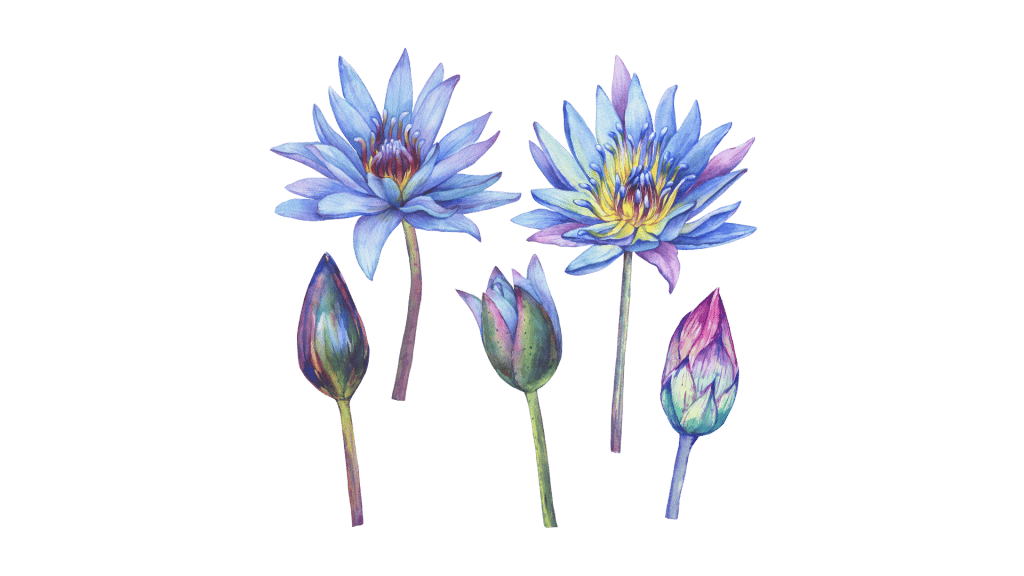
How to Use Blue Lotus Flower
Traditionally, blue lotus flower was brewed into a strong tea.
While this method remains viable today, there also are also other, more efficient methods of using this plant.
Please note, the safety profile of the blue lotus flower has not yet been confirmed. Due to the narcotic and potentially addictive qualities of apomorphine, the risk of abuse with this herbal extract is likely — especially when using the concentrated absolute in a vaporizer.
1. Blue Lotus Flower Tea
The easiest way to use the blue lotus flower is to prepare it as tea:
- Heat your water just before boiling and add about two tablespoons of dried blue lotus flower into a strainer.
- Pour your hot water over the tea and cover it.
- Allow the tea to infuse for about 5 minutes before drinking.
The Blue lotus flower has a high concentration of essential oils. If you want to maintain the incredible fragrance of this tea, it’s important to use water that isn’t quite boiling (80ºC is optimal) and cover the mug while you let it steep. This reduces the amount of volatile oils that are able to escape while you prepare your tea.
You can flavor the tea as needed with honey, agave nectar, or sugar, but it has already has a pleasant taste on its own.
2. RDA Vaporizers
Blue lotus flower resins are sometimes used in a specialized device called an RDA vape.
RDA stands for “rebuildable dripping atomizer.” They’re a special kind of vape that allows resins to be added directly to the heating coil. They don’t contain a reservoir, and thus the blue lotus flower resin must be dripped onto the coil every so often.
The resin is then vaporized and inhaled, where it’s rapidly absorbed through the lungs.
Studies have confirmed that both apomorphine and nuciferine remain viable during the atomization process and can be inhaled for more efficient delivery [6].
Related: What are DMT Vape Pens?
3. Blue Lotus Flower Absolute
Most essential oils are extracted using a process called steam distillation. However, some plants, including blue lotus flower, jasmine, and ylang-ylang, are extracted using solvents instead.
This process yields an extract called an absolute, which is thicker and stronger than conventional essential oils.
Blue lotus absolute is often used in making skincare products, perfumes, and incense. It has a light floral aroma somewhat similar to ylang-ylang, but not quite as floral and with a mild spicy component.
4. Alcoholic Tinctures & Infusions
Blue lotus flower was often infused into alcoholic beverages as a way to preserve the aroma and active constituents of the plant long-term.
While it’s uncommon to find blue lotus-infused wines or spirits, they’re easy to make at home by simply soaking dried blue lotus flower in a bottle of vodka or alcoholic spirit of your choice for several weeks before straining out the plant matter.
Is Blue Lotus Legal?
Yes, blue lotus is legal in most parts of the world.
It’s unregulated in the United States, Canada, and most of Europe. The exceptions are Russia, Latvia, and Poland — all of which ban the sale of the herb.
It’s odd that the FDA hasn’t chosen to regulate or prohibit this flower because the administration also lists the flowers as poisonous (despite any clear evidence of this).
The most common form you’ll find blue lotus is a tea or dried herb, incense, and fragrance oils.
Related: List of Legal Psychoactive Substances Where You Live.
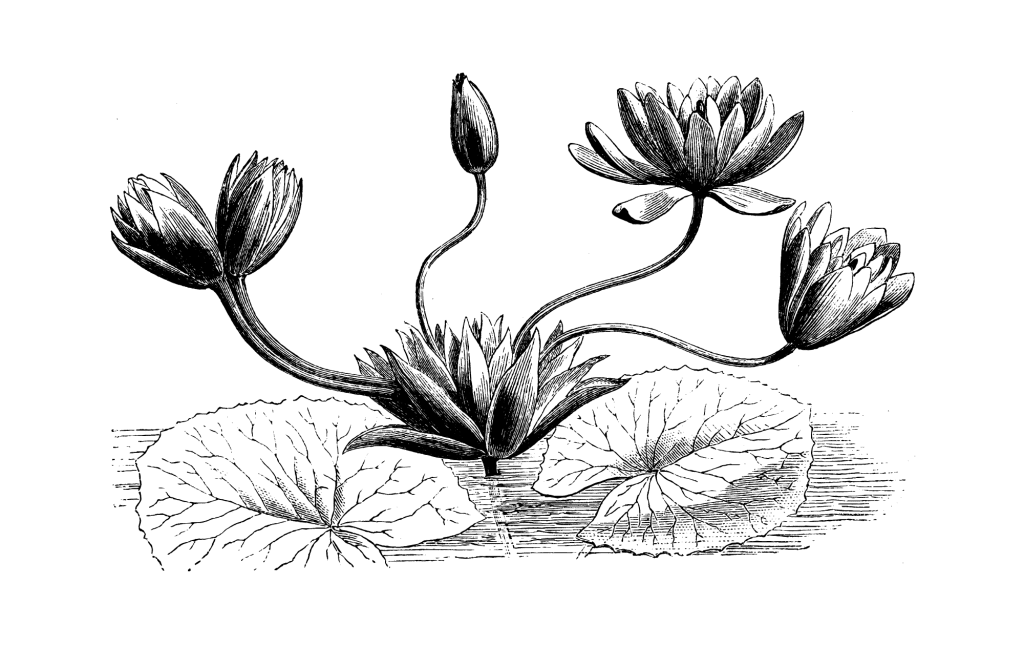
Blue Lotus Flower FAQs
1. Is Blue Lotus Flower Tea Hallucinogenic?
No, blue lotus doesn’t produce hallucinations or alter sensory perception like conventional hallucinogenics.
Instead, this herb exerts most of its visionary effects by inducing vivid or lucid dream states. It’s also euphoric and soporific.
2. What Does Blue Lotus Flower Smell Like?
Blue lotus has a strong floral scent similar to ylang-ylang. It has a mildly spicy character with hints of fresh pepper, ginger, and frangipani.
3. Is Blue Lotus Flower Tea Safe?
There are no reported deaths from people using blue lotus flower — however, it does contain compounds similar to morphine that could lead to side effects if used in high doses.
The most common result of taking too much blue lotus flower tea is sedation and nausea.
Inhalation brings much stronger and faster-acting effects but also dramatically increases the risk and severity of side effects. Tread with caution when using blue lotus flower in a vape.
4. What Are Isoquinoline Alkaloids?
Isoquinoline alkaloids are a large group of compounds found in plants with significant medicinal relevance.
Many members of the isoquinoline group have proven medical efficacy and several have even been developed into pharmaceutical drugs. Studies have found isoquinoline alkaloids with antiviral, antifungal, anticancer, antioxidant, antispasmodic, and enzyme inhibiting activities [8].
Isoquinoline alkaloids are found in several species of plants, including:
- Blue Lotus (Nymphaea caerulea)
- Greater celandine (Chelidonium majus)
- Opium poppy (Papaver somniferum)
- California poppy (Eschscholtzia californica)
- Fendler’s meadow rue (Thalictrum fendleri)
- Rainforest fevertree (Siparuna guianensis)
- Moonseed (Menispermum dauricum)
Key Takeaways: What is Blue Lotus Flower?
Blue lotus is a uniquely psychoactive plant. It isn’t psychedelic like LSD or magic mushrooms, and it doesn’t even make users high like cannabis. However, it does have a lucid effect similar to low-dose LSA or Amanita muscaria.
The active ingredients of the plant are narcotic and soporific — making users feel drowsy and euphoric before falling asleep.
While asleep, blue lotus dramatically upregulates dream states. Many people find they’re able to lucid dream much more readily when using blue lotus. Even those that don’t manage to lucid dream report much more vivid and whimsical dreams when they wake up.
References
- Hagel, J. M., & Facchini, P. J. (2013). Benzylisoquinoline alkaloid metabolism: a century of discovery and a brave new world. Plant and Cell Physiology, 54(5), 647-672.
- Jia-Qing, Q. I. A. N. (2002). Cardiovascular pharmacological effects of bisbenzylisoquinoline alkaloid derivatives. Acta Pharmacol Sin, 23, 1086-92.
- Millan, M. J., Maiofiss, L., Cussac, D., Audinot, V., Boutin, J. A., & Newman-Tancredi, A. (2002). Differential actions of antiparkinson agents at multiple classes of monoaminergic receptor. I. A multivariate analysis of the binding profiles of 14 drugs at 21 native and cloned human receptor subtypes. Journal of Pharmacology and Experimental Therapeutics, 303(2), 791-804.
- LeWitt, P. A. (2004). Subcutaneously administered apomorphine: pharmacokinetics and metabolism. Neurology, 62(6 suppl 4), S8-S11.
- Farrell, M. S., McCorvy, J. D., Huang, X. P., Urban, D. J., White, K. L., Giguere, P. M., … & Roth, B. L. (2016). In vitro and in vivo characterization of the alkaloid nuciferine. PLoS One, 11(3), e0150602.
- Poklis, J. L., Mulder, H. A., Halquist, M. S., Wolf, C. E., Poklis, A., & Peace, M. R. (2017). The blue lotus flower (Nymphea caerulea) resin used in a new type of electronic cigarette, the rebuildable dripping atomizer. Journal of psychoactive drugs, 49(3), 175-181.
- Agnihotri, V. K., ElSohly, H. N., Khan, S. I., Smillie, T. J., Khan, I. A., & Walker, L. A. (2008). Antioxidant constituents of Nymphaea caerulea flowers. Phytochemistry, 69(10), 2061-2066.
- Dey, P., Kundu, A., Kumar, A., Gupta, M., Lee, B. M., Bhakta, T., … & Kim, H. S. (2020). Analysis of alkaloids (indole alkaloids, isoquinoline alkaloids, tropane alkaloids). In Recent advances in natural products analysis (pp. 505-567). Elsevier.

